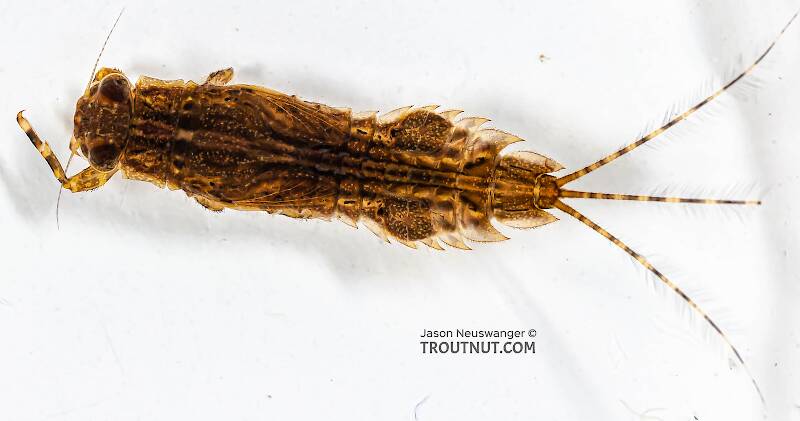
Salmonflies
Pteronarcys californica
The giant Salmonflies of the Western mountains are legendary for their proclivity to elicit consistent dry-fly action and ferocious strikes.


Mayfly Species Eurylophella temporalis (Chocolate Duns)
Where & when
This widespread Eastern and Midwestern species is not really mentioned in fly fishing literature. The Leonards say in Mayflies of Michigan Trout Streams that it is found in lakes and small streams. Some ready-to-emerge nymphs I collected in northern Wisconsin came from the very small headwaters of a small stream in early June, while other adults were found emerging in long, broad, lake-like flats of a warmwater smallmouth stream on June 21st.In 29 records from GBIF, adults of this species have mostly been collected during July (41%), June (28%), May (10%), February (7%), and April (7%).
In 9 records from GBIF, this species has been collected at elevations ranging from 282 to 1909 ft, with an average (median) of 732 ft.
Species Range
Hatching behavior
The only emergence I've witnessed was midday on a lake-like flat on a warmwater stream. Nymphs appeared to be emerging through the surface film throughout the river, possibly more concentrated near shore.Physical description
Most physical descriptions on Troutnut are direct or slightly edited quotes from the original scientific sources describing or updating the species, although there may be errors in copying them to this website. Such descriptions aren't always definitive, because species often turn out to be more variable than the original describers observed. In some cases, only a single specimen was described! However, they are useful starting points.
Male Spinner
Wing length: 8-10 mm
A member of the bicolor group (now a synonym of Eurylophella bicolor), allied to both E. prudentalis (now a synonym of Eurylophella prudentalis) and E. doris (now a synonym of Eurylophella doris). No minute black dots on legs and abdomen, as in E. lutulenta (now a synonym of Eurylophella lutulenta).
Eyes reddish yellow. Head deep yellowish. Thorax bright brown, tinged with olivaceous dorsally. A paler orange-yellow streak anterior to the wing roots; pale creamy shading on the pleura at the wing bases. Legs yellow, shading into dirty white on the tibiae. Claws and joints of the tibiae blackish; a dark dot apically on the femora. Wings hyaline; venation hyaline. On the fore wing, the costa is slightly yellowish at the base. Abdominal tergites 2-7 deep brown, 8 and 9 reddish brown, 10 yellowish brown. Posterior margins of tergites 2-4 blackish. On the basal tergites the faint brown mid-dorsal line is partially geminate. A small subdorsal dark dot on the anterior margin of each tergite. Faint dark markings in the region of the spiracles; lateral margins of 8 and 9 narrowly yellowish. Pale yellowish white ventrally; basal sternites tinged with brown. The usual curved row of dark dots is distinct, and the ganglionic areas of sternites 4-7 are brown. Tails whitish, joinings dark brown.
Nymph
The occipital tubercles of nymphs of both sexes are very strongly developed and distinctly conical in shape. The rows of dorsal spines are subparallel, sometimes slightly divergent on tergite 4. These spines on tergites 1-3 are long and tapering, finger-like and bent backward. The postero-lateral spines on segments 2 and 3 are well developed, that on segment 3 being almost twice as long as its width at the base. The general color is very dark brown, with a heavy sprinkling of minute pale dots. A pale dorsal stripe is present in some specimens. The operculum is sprinkled with pale dots, and may have two pale patches along the joint. Ventrally the curved row of dark dots and the dark lateral dashes are distinct. Tails distinctly banded, alternately dark brown and pale yellow.
Specimens of the Mayfly Species Eurylophella temporalis
1 Male Dun
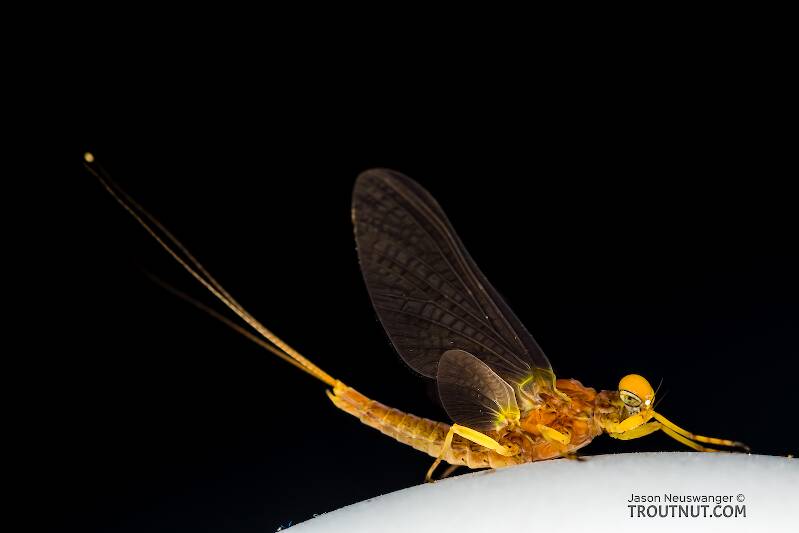
1 Female Dun
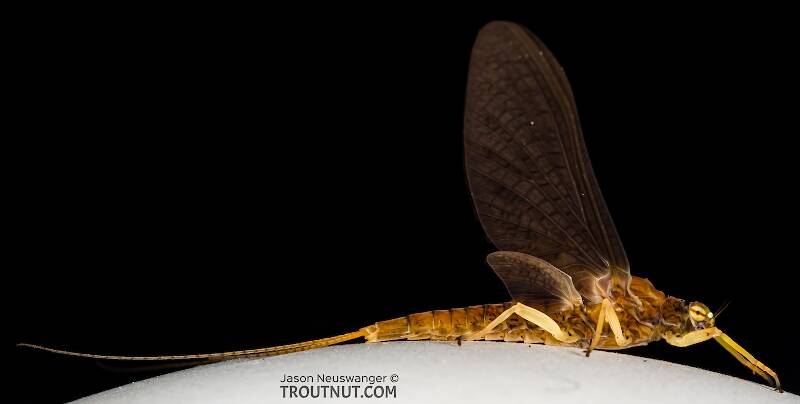
1 Male Spinner
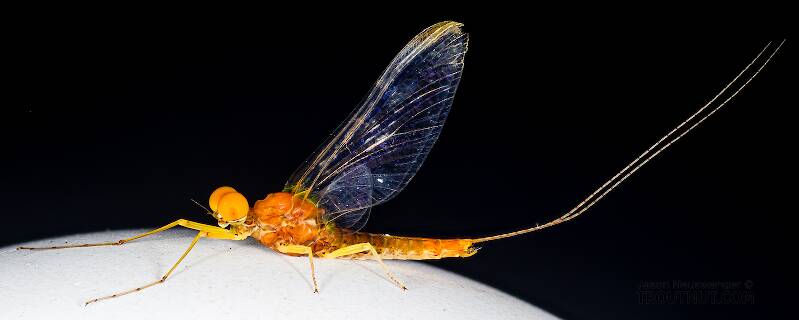
It keys confidently to Eurylophella temporalis using Allen & Edmunds (1963), primarily based on the shape of the penes, which is more distinctive for this species than for most others in the genus. However, the remainder of the description of the male spinner in that paper fits this specimen perfectly as well.
1 Female Spinner
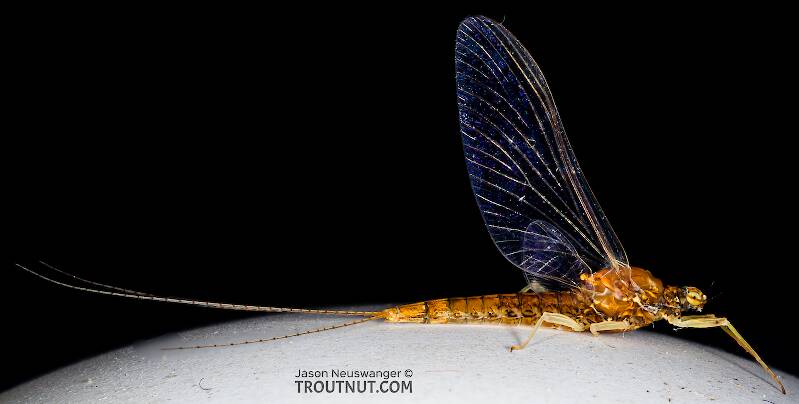
1 Nymph
Discussions of Eurylophella temporalis
Start a Discussion of Eurylophella temporalis
References
- Leonard, Justin W. and Fannie A. Leonard. 1962. Mayflies of Michigan Trout Streams. Cranbrook Institute of Science.
- Needham, James G., Jay R. Traver, and Yin-Chi Hsu. 1935. The Biology of Mayflies. Comstock Publishing Company, Inc.
Mayfly Species Eurylophella temporalis (Chocolate Duns)
Species Range
Common Name
Resources
- NatureServe
- Integrated Taxonomic Information System
- Global Biodiversity Information Facility
- Described by McDunnough (1924)


